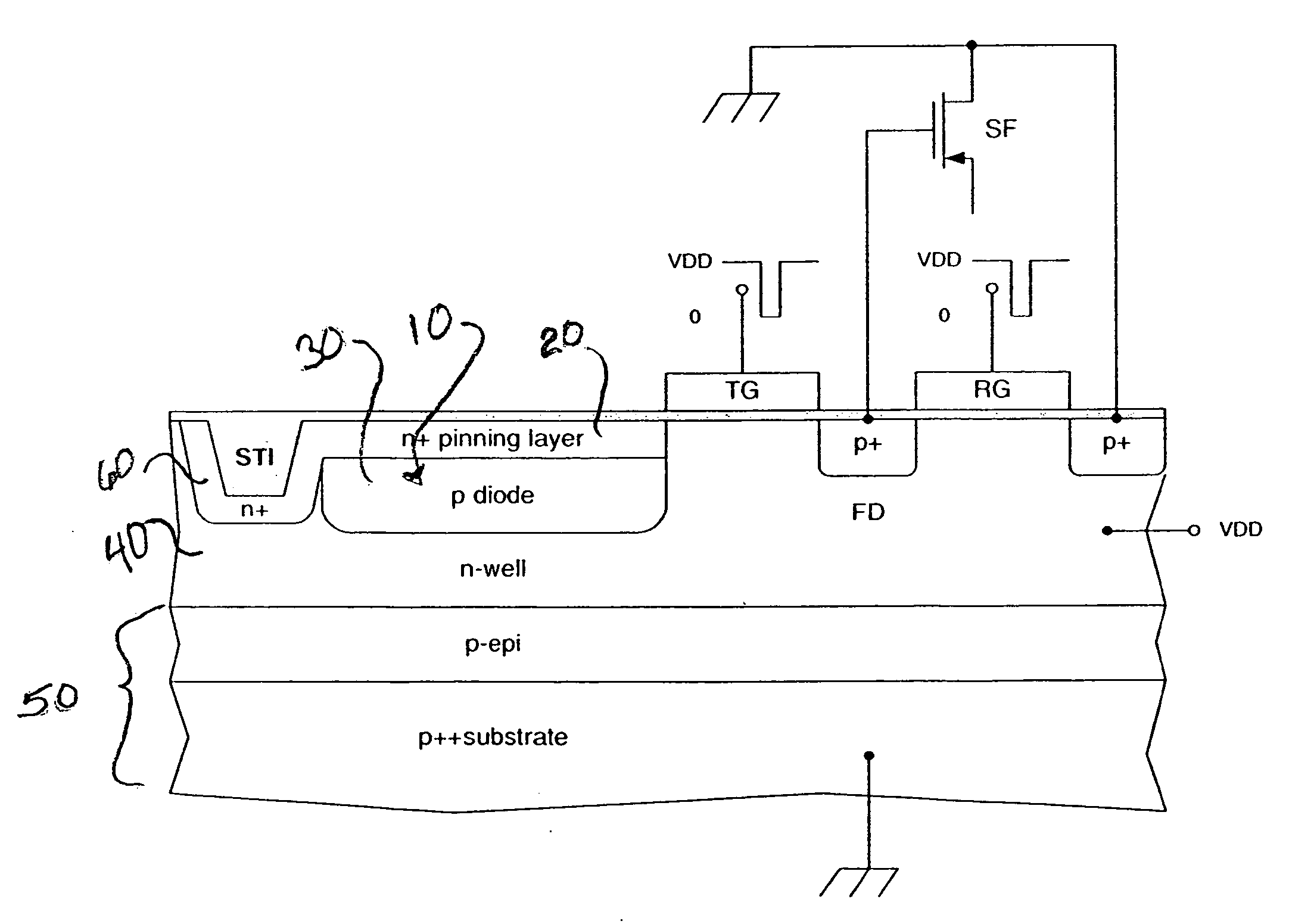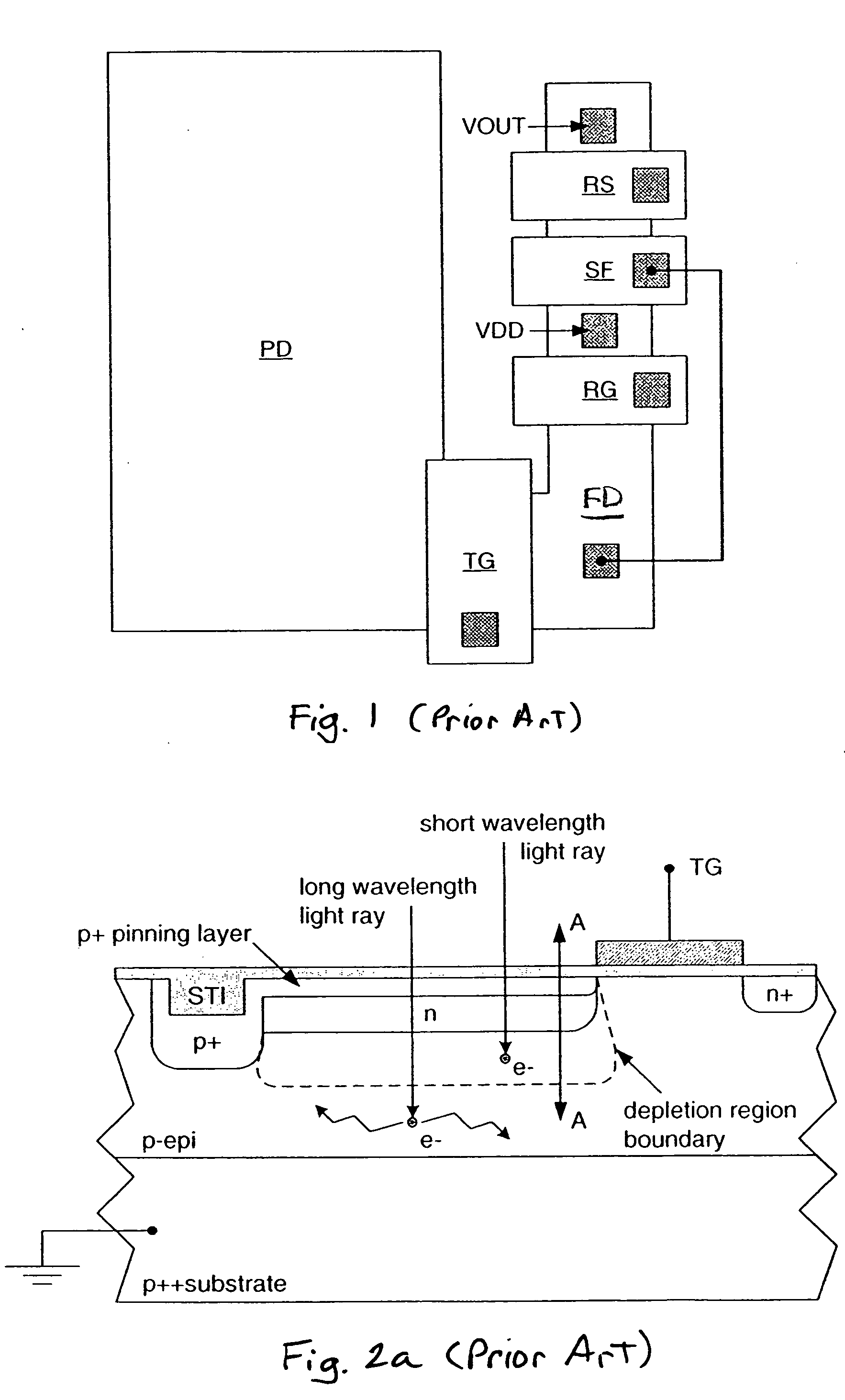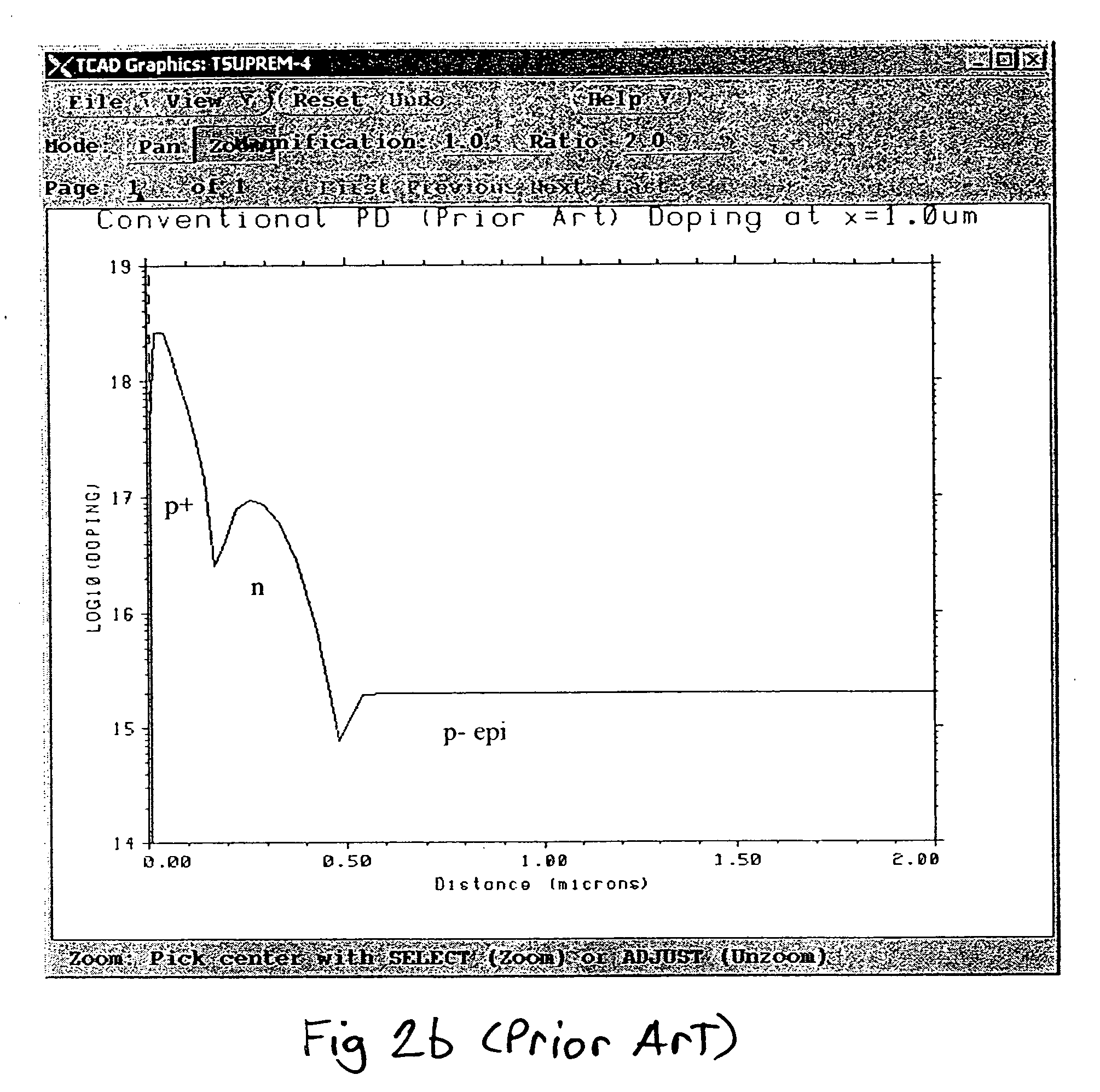PMOS pixel structure with low cross talk for active pixel image sensors
a pixel structure and active pixel technology, applied in the field of image sensors, can solve the problems of high level of pixel-to-pixel cross talk of sensors, inability to reduce cross talk low enough using these techniques for certain applications, and inability to reduce cross talk
- Summary
- Abstract
- Description
- Claims
- Application Information
AI Technical Summary
Benefits of technology
Problems solved by technology
Method used
Image
Examples
Embodiment Construction
[0021] Historically, charge-coupled device (CCD) -based image sensors have primarily used electrons as the signal-charge carrier to take advantage of their higher mobility to maintain good transfer efficiency at high data rates. To reduce color cross talk and smear, and to provide blooming protection, CCD imagers are also typically built in a well, or vertical-overflow drain (VOD) structure (see for example U.S. Pat. No. 4,527,182). Therefore, building a VOD structure along with the requirement for an n-channel requires that a p-well be formed in an n-type substrate.
[0022] CMOS-based image sensors have since become more readily available. Current day CMOS image sensors are typically built on either p- or n-type silicon substrates. Those built on p-type substrates using mainstream CMOS processing can contain high levels of circuit integration, but suffer from high levels of color cross talk. Those built using a typical CCD-like process on n-type substrates (S. Inoue et al.,“A 3.25 M...
PUM
 Login to View More
Login to View More Abstract
Description
Claims
Application Information
 Login to View More
Login to View More - R&D
- Intellectual Property
- Life Sciences
- Materials
- Tech Scout
- Unparalleled Data Quality
- Higher Quality Content
- 60% Fewer Hallucinations
Browse by: Latest US Patents, China's latest patents, Technical Efficacy Thesaurus, Application Domain, Technology Topic, Popular Technical Reports.
© 2025 PatSnap. All rights reserved.Legal|Privacy policy|Modern Slavery Act Transparency Statement|Sitemap|About US| Contact US: help@patsnap.com



